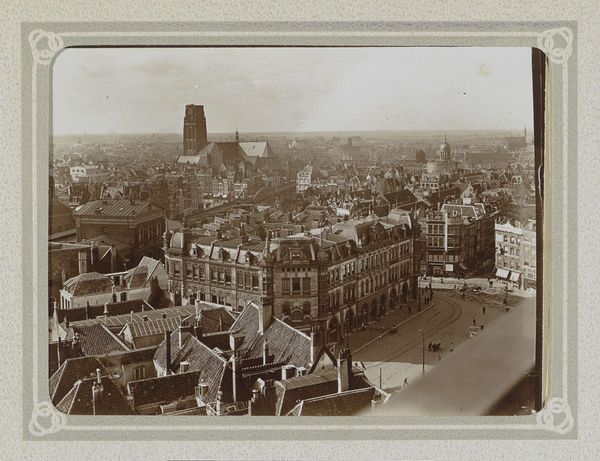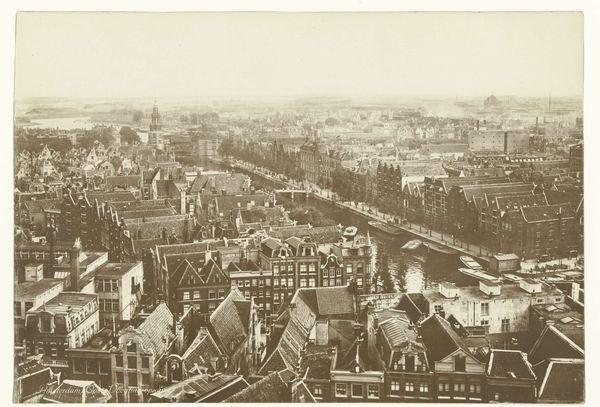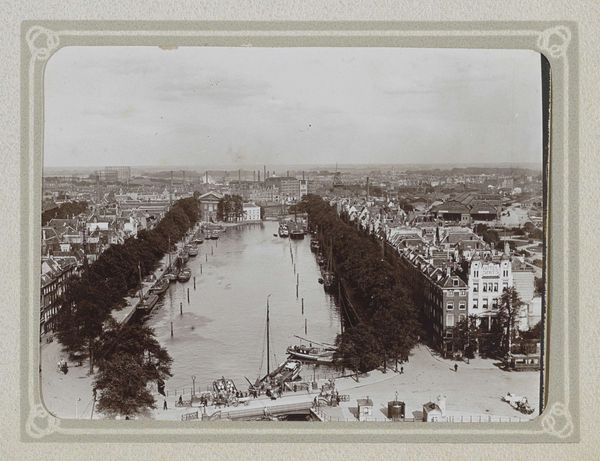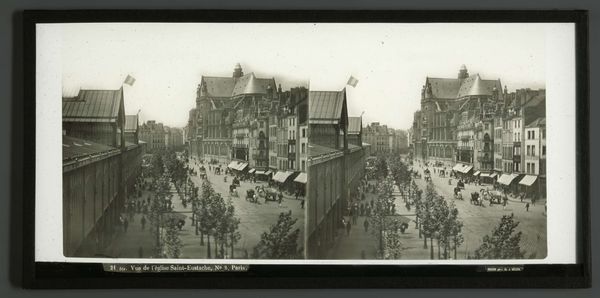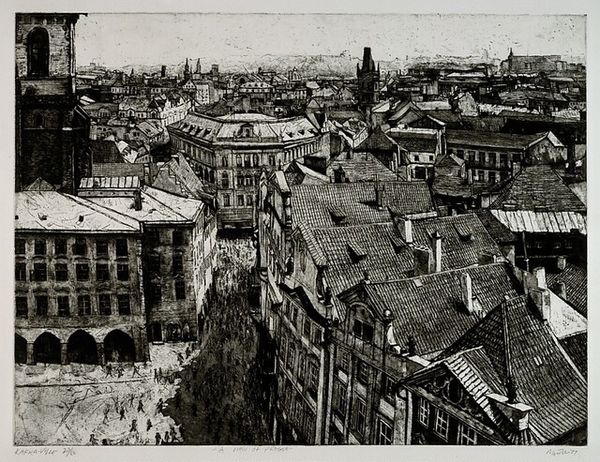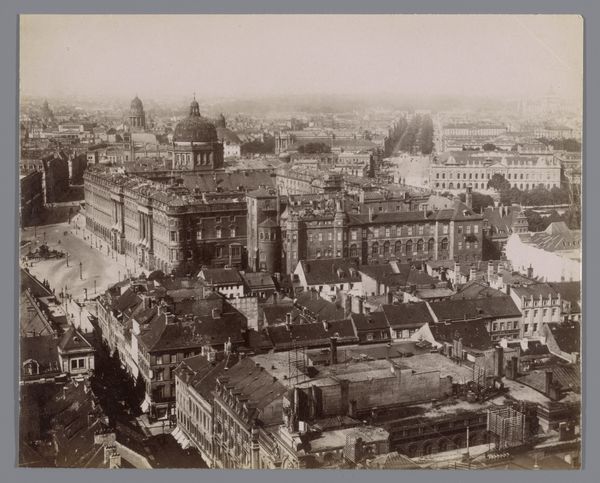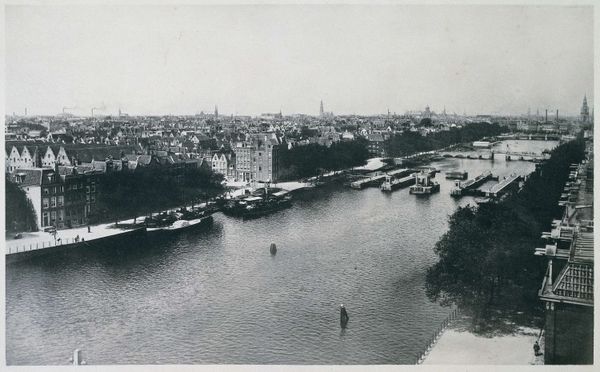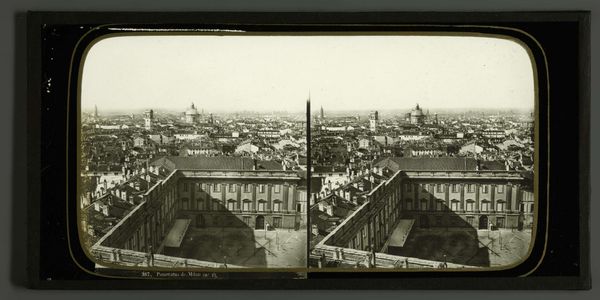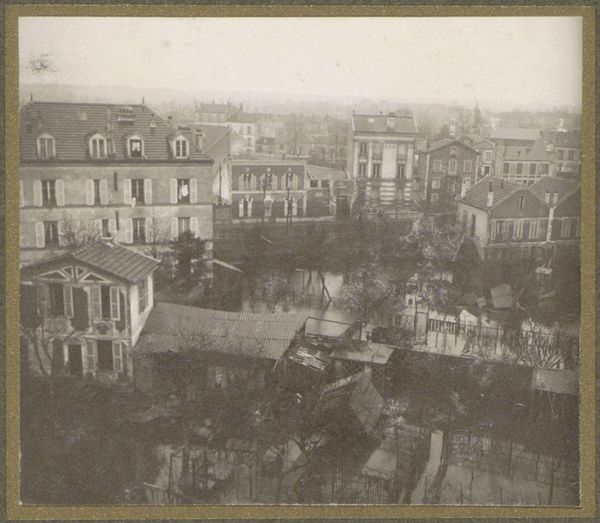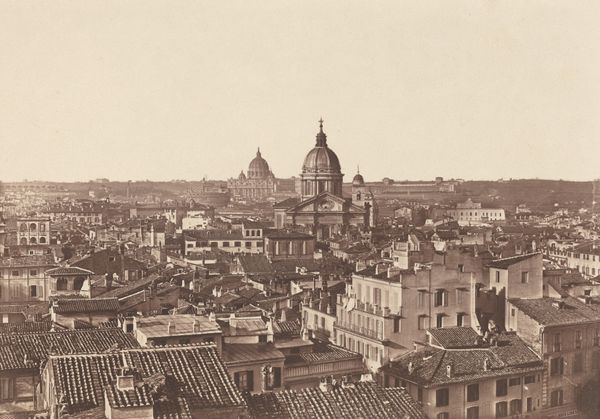
Weteringschans en Spiegelgracht, gezien vanaf het Rijksmuseum, Amsterdam before 1894
photography
dutch-golden-age
cityscape
train station
street-photography
photography
street photography
cityscape
Dimensions: height 282 mm, width 462 mm, height 483 , width 642 mm
Copyright: Rijks Museum: Open Domain
Curator: Wow, what a perspective. There’s something quite magical about seeing a cityscape stretch out like this in monochrome, you know? All those rooftops pressed together, softened edges… almost like a dream. Editor: Indeed. What we have here is a photograph entitled "Weteringschans en Spiegelgracht, gezien vanaf het Rijksmuseum, Amsterdam" taken before 1894 by Gerrit Hendricus Heinen. Curator: Right, before 1894! Makes you wonder what life was *really* like then, beyond the glossy histories, doesn’t it? I bet that rooftop offered him such a sense of liberation. It’s a beautifully still photograph. You can feel the weight of all that silence in the composition. Editor: The location is especially revealing. Situated high up, the Rijksmuseum at that time not only represented Dutch cultural identity but also the urban landscape and, perhaps, controlled vision over the modernizing city. The black and white palette flattens the scene, but emphasizes forms and geometry, creating a stark kind of monumentality out of the mundane. Curator: You said it! It’s the way those buildings, lined up along the canal, have been transformed to these geometric, almost abstract shapes through the use of black and white. Plus there’s this fascinating texture across the frame – the rooftops ripple into the distance, softening what would otherwise be this potentially brutal vista. But what did street photography like this do at the time? Was it just documenting change? Editor: It certainly documented the urban fabric undergoing transformation, from horse-drawn carriages, visible at the cross-roads, to looming cultural buildings like the Rijksmuseum itself, asserting claims over the urban terrain, literally through vision, framing narratives about progress. The choice of subject also reinforced notions of progress – carefully chosen perspectives legitimized Amsterdam’s grand narrative about itself. Curator: Interesting. So there’s both documentary and propaganda at play? It does remind you that no matter how transparent something *appears* to be, that it’s usually carefully considered, and shaped, often with agenda. Editor: Precisely. As an artwork it reflects the artist's perception of that era, how society wished to see itself… but perhaps more subtly, how certain authorities wanted others to envision that place. It's more than just an old snapshot; it's a visual encoding of the ambitions and tensions embedded within the fin-de-siècle city. Curator: Gosh, next time I’m at the Rijksmuseum I'm going to think of this.
Comments
No comments
Be the first to comment and join the conversation on the ultimate creative platform.

